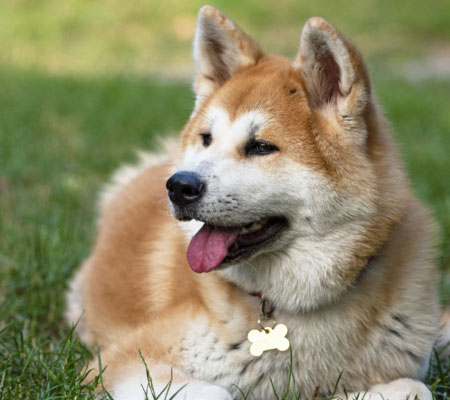Origin of Alaskan Husky is United States ( Alaska ).Alaskan Husky is a medium-sized, genetically diverse native work sled dog breed.This breed belongs to the Spitz( a type of domestic dog having pointed ears and muzzle ) gene family. Alaskan Husky is the most common type of dog used in competitive dog sledding races in both sprint and long-distance races such as the Iditarod Trail Sled Dog Race, the Yukon Quest, and the Finnmarkslopet. Alaskan Husky is not recognized as a breed by any major kennel club. Genetic studies show that Alaskan Husky is derived from pre-colonial North American Arctic dogs crossed with European breeds such as Pointers, German Shepherd Dogs, and Salukis to improve its performance.DNA studies have shown that Alaskan Husky has a genetic trait and can actually be accurately identified in DNA breed tests. Rather, it is the result of careful selection of desirable characteristics of sled dogs of various other breeds, including: Tensile capacity, endurance, speed, intelligence, appetite, resistance to extreme weather. Some of the heavy and dense protective double coat of the Arctic ancestors.
Alaskan husky Highlights
Breed Size
Medium
Nature
Gentle, Friendly, Playful, Outgoing, Willful
Energy Level
Active
Intelligence
High
Barking Level
Howler
Coat Length
Long, Medium
Breed Group
Working
Droll Amount
Low
Good with
Familes, Children, Dog
Feed Level
Medium, High
Colour Type
White, Gray & White, Red & White, Black & White
Other Facts
Litter Size - 5-10 puppies
History
Aboriginal dogs found throughout Alaska were known for their superior strength and durability, but lacked speed Therefore, various crossbreeding to more volatile Old World breeds, including Siberian imports that dominated Alaska's local organized races, has been used to produce faster-running dogs. Since the early 20th century, different breeders have turned to different breeds and produced different types of racing dogs. On most modern routes, the pedigree includes some form of traditional husky heritage, including Mackenzie River Husky, Greenland Dog, and Samoyed, but Alaskan Malamute and Siberian Husky are the most common.
In The later half of 20th century various types of hunting dogs and greyhounds are bred on the Alaskan Husky line, including pointers, greyhounds, German shorthaired pointers, sarkis, borzoi, labradors, and setters to enable faster racing. Some breeders use wolves in different places.
A 2015 DNA study showed that Alaskan Husky, Siberian Husky, and Alaskan Malamute share a close genetic relationship with sled dogs in the Chukotka Autonomous Region of Siberia. They were separate from the two Inuit dogs, the Canadian Eskimo dog and the Greenland dog.
Both Siberian Husky and Malamute retained their Siberian ancestry and made significant contributions to Alaskan Husky, which was developed by crossing with European varieties.
22-27 inch 28-39 kg 13-15 year
Height

Weight

Life Span
Health and Care
Alaskan Husky has been specially bred for its athletic performance. As a result, its athletic performance and assimilation efficiency are far superior to those of the average domesticated dog, especially when it comes to endurance performance.
As a special work sled dog, Alaskan Husky is exposed to the climate or work-specific health conditions that sled dogs may experience, such as temperature-related bronchitis and bronchial lung complaints, also known as "ski asthma." there is a possibility.
In 2020, the largest study ever published on "canine hematological and biochemical serum analysts of dogs", including the largest dataset of healthy sports dogs. The reference dogs were 4,804 sled dogs training for the Idita Rod Trail sled dog race, the majority of which were Alaskan Husky.The study found that anti-aging and anti-inflammatory biochemical levels in dogs increased over time with exercise, improving the physical and psychic abilities of dogs up to an average age of 6.6 years.
Feeding
- Alaskan Husky is a high-energy dog ??that requires high-quality, high-calorie food to maintain energy levels.
- An adult Alaskan Husky requires 1000 - 1100 calories daily while active huskies those who participate in races regularly needs 1800 calories/day. Diet Contains at least 22% protien content and 8% fat content.
- Give Him 3-4 cups of dry dog food into 2 meals.
- Plant protiens such as lentils and pea will also good for this breed.
Behaviour
- Alaskan Husky's behavior and temperament can vary widely due to the wide range of genetic backgrounds and breeding purposes within the breed.
- Dogs need to be in close contact with other dogs while engrossed in the team, need to be handled by humans for proper care and transportation, and dogs are racing teams in crowded environments Mental health is also important because you need to play in and other dog teams.
- Alaskan Husky is loyal, but very independent and does not stay around when released. He is an adventurer in nature and loves driving and everyday changes.
- Alaskan Husky is a great companion for hikers, runners and mountaineers.
Fun Facts
1) The Alaskan Husky sprint team can reach speeds up to 45 km / h.
2) The team of distance specialists completed the 938 mile (1,510 km) race in just 8 days, 3 hours, 40 minutes and 13 seconds. This time includes a mandatory 40-hour break and other regular breaks.
3) Alaskan Husky is a great companion for hikers, runners and mountaineers.
4) They prefer cooler climates.
Alaskan husky Unique Name
| Male Name | Female Name |
|---|---|
| Boomer | Buffy |
| Buddy | Daphne |
| Captain | Darla |
| Chase | Faith |
| Dexter | Fiona |
| Duke | Foxy |
| Gage | Greta |
| Hank | Hope |
| Harley | Ibby |
| Harvey | Madison |
| King | Mocha |
| Mickey | Morgan |
| Milo | Precious |
| Ned | Stella |
| Peanut | Sugar |
| Scooby | Brooke |
| Shamus | Bugsey |
| Spencer | Butterscotch |
| Yukon | Chaos |
| Tiny | Scout |





